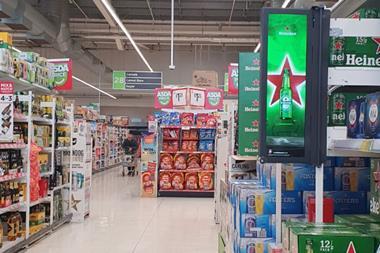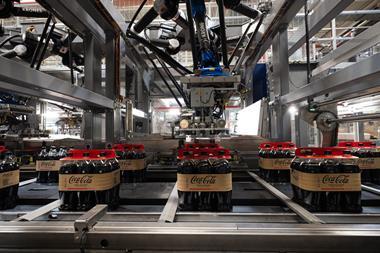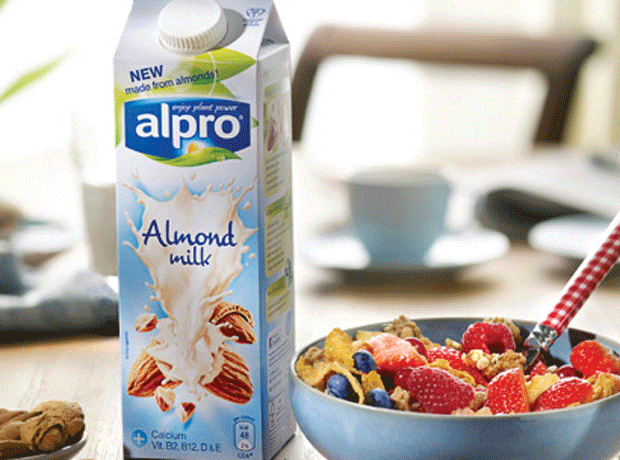In April, Asda opened a new store in Dyfed, South Wales. The new 16,000 sq ft Pembroke Dock store is smaller than Asda’s average 50,000 sq ft size store. However, despite its size, Asda has taken a bold move to stock both a food and a non-food range.
The former Co-op store served the community with its basic grocery needs. However, Asda will be stocking a George clothing range as well, bringing something new to this part of Wales.
Would Asda have been better off concentrating on a wider food range and opening a standalone George store elsewhere? One factor that will determine whether this small format store will be a success lies in the demographics of the local catchment.
CACI found that three main ACORN groups dominate the Pembroke Dock catchment. The biggest is Affluent Greys, who make up more than 25%. Typically, the nearby Tesco stores may have a stronger offer for this group, which will require Asda to ensure its food offer appeals to the elderly. However, this group also tends to be less mobile, so Asda may be able to attract a good proportion of them.
The second most dominant group, making up 20% of the catchment, is Struggling Families. It is this group that Asda will be hoping to attract. The limited George clothing range alongside a smaller, but carefully selected, food range should invite success if Asda can attract a good quantity of Struggling Families.
The third most dominant group, Settled Suburbia, is normally attracted to larger out-of-town stores, leaving the older, less affluent households to visit the Asda store. Although this will help Asda tailor its offer to meet these groups, the George range may still struggle as families and more affluent groups are attracted to larger, out-of-town stores, namely Tesco.
Examining the impact of the new store, Tesco will probably suffer the biggest losses. CACI predicts that Asda should successfully take around £182,000 a week from the nearby Tesco stores. Somerfield will face a potential loss of around £60,000 a week, while Lidl and Kwik Save will suffer smaller losses.
Although Tesco will feel a significant impact, it should still hold on to a dominant market share of 28% within the catchment. This is not surprising, as the Asda store is competing with three much larger, established Tesco stores. Despite Tesco’s dominance, CACI predicts Asda should still manage a healthy market share of 22%, slightly ahead of Somerfield.
If Asda were offered a larger store, it would probably accept it. Of the top four grocers, Asda is the best match to the local demographics.
The former Co-op store served the community with its basic grocery needs. However, Asda will be stocking a George clothing range as well, bringing something new to this part of Wales.
Would Asda have been better off concentrating on a wider food range and opening a standalone George store elsewhere? One factor that will determine whether this small format store will be a success lies in the demographics of the local catchment.
CACI found that three main ACORN groups dominate the Pembroke Dock catchment. The biggest is Affluent Greys, who make up more than 25%. Typically, the nearby Tesco stores may have a stronger offer for this group, which will require Asda to ensure its food offer appeals to the elderly. However, this group also tends to be less mobile, so Asda may be able to attract a good proportion of them.
The second most dominant group, making up 20% of the catchment, is Struggling Families. It is this group that Asda will be hoping to attract. The limited George clothing range alongside a smaller, but carefully selected, food range should invite success if Asda can attract a good quantity of Struggling Families.
The third most dominant group, Settled Suburbia, is normally attracted to larger out-of-town stores, leaving the older, less affluent households to visit the Asda store. Although this will help Asda tailor its offer to meet these groups, the George range may still struggle as families and more affluent groups are attracted to larger, out-of-town stores, namely Tesco.
Examining the impact of the new store, Tesco will probably suffer the biggest losses. CACI predicts that Asda should successfully take around £182,000 a week from the nearby Tesco stores. Somerfield will face a potential loss of around £60,000 a week, while Lidl and Kwik Save will suffer smaller losses.
Although Tesco will feel a significant impact, it should still hold on to a dominant market share of 28% within the catchment. This is not surprising, as the Asda store is competing with three much larger, established Tesco stores. Despite Tesco’s dominance, CACI predicts Asda should still manage a healthy market share of 22%, slightly ahead of Somerfield.
If Asda were offered a larger store, it would probably accept it. Of the top four grocers, Asda is the best match to the local demographics.















No comments yet